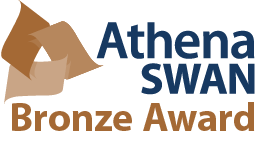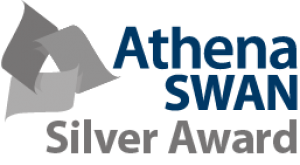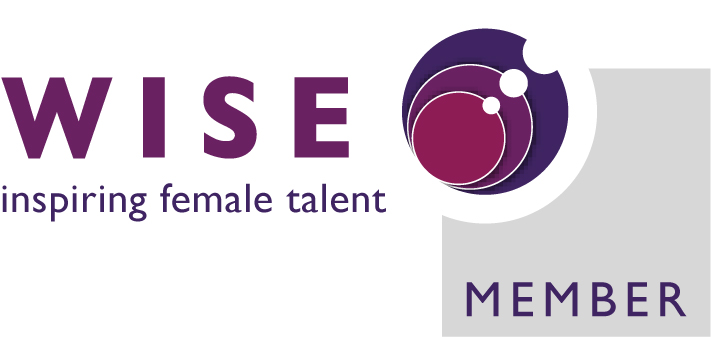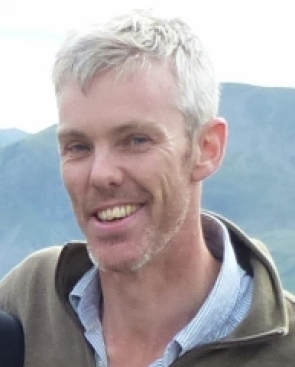You are here
- Home
- Dr Tom Argles
Dr Tom Argles

Professional biography
I completed a five-year stint as Director of Teaching for the School of Environment, Earth and Ecosystem Sciences (EEES) at the end of July 2023. I have been a Senior Lecturer in the School of Environment, Earth and Ecosystem Sciences (formerly Department of Earth Sciences) since 2011, and a Lecturer from 2000-2011. Prior to that, I held a NERC Research Fellowship at the Open University (1997-2000), working on highly deformed and metamorphosed rocks at the western end of the Himalaya, in northern Pakistan. Since then, my research has focused mainly on orogenic processes in the Himalaya and Tibet, with brief excursions to the Alps, Australia, southern Spain and India. In the meantime, my Himalayan research has migrated gradually eastwards, through north-west India and southern Tibet to Bhutan and Arunachal Pradesh. Recently, the focus of my research has shifted to investigating how critical elements - vital for the development of green technologies - become enriched during partial melting processes in the deep roots of mountain belts. I've co-supervised 16 PhD students in that time, working on deep subduction and element cycling in the Alps, isotopic fingerprinting of tectonic units in the Himalaya, channel flow and crustal melting in the Himalaya, kimberlites and lamproites of southern India, ground ice hazards in Iceland and critical elements in granites.
Geoscience education
In 2011, I started a project hosted by eSTEeM at the OU entitled "Geospatial technologies in distance modules in Science", with Sarah Davies. This project is evaluating the impact of geospatial distance materials created during yOU-Map on OU students and tutors. Read a description of the project here. I was also involved in a project creating an immersive, 3-D learning environment for a virtual field trip (VFT), funded by the Wolfson Foundation, as part of the Openscience Laboratory, which was launched in July 2013. In 2014 and 2015 I was a partner on a project with Daden Ltd and the Field Studies Council, scoping and designing the Fieldscapes system, an online platform for hosting and delivering virtual field trips.
From Jan 2008 to Dec 2009 I held a COLMSCT Teaching Fellowship entitled: yOU-Map: Delivering spatial geological data digitally to a distance-learning community. This project aimed to deliver innovative teaching of spatial geological data in a digital context to a distance-learning community of students, primarily focusing on the rewrite of the second-level Geology course (S260, which was being replaced by S276). You can read about that project here. In 2013, I authored materials teaching practical science online using GIS software which, in the absence of a browser-based web GIS software, was challenging for staff and students alike. I recently co-authored similar GIS topics for one Earth Science and one Environmental Science module launched in October 2023 using a fully functional web GIS system, ArcGIS Online, which was far more enjoyable for both authors and students.
I am an active member of the UK geoscience education community, serving on the Council of the Earth Science Teachers' Association since 2013 (as HE Coordinator), and chairing the Geological Society's Higher Education Network (2014 onwards). I have also served on the Education Committee and the Joint Higher Education Committee of the Geological Society.
 I have been the academic Project Lead for the Open University's Virtual Microscope open access website since May 2019. During this period, worldwide usage of the VM increased by more than tenfold, triggered by the rapid increase in demand for online resources during the pandemic, boosted by the addition of three new UK university teaching collections and benefitting from two website upgrades, including a relaunch in January 2021.
I have been the academic Project Lead for the Open University's Virtual Microscope open access website since May 2019. During this period, worldwide usage of the VM increased by more than tenfold, triggered by the rapid increase in demand for online resources during the pandemic, boosted by the addition of three new UK university teaching collections and benefitting from two website upgrades, including a relaunch in January 2021.
Engagement & Outreach
I have a keen interest in outreach activities, in particular I have been coordinating, designing and running visits to local primary schools (>50 visits since 2007) that give children hands-on experience of rocks, minerals and fossils, as well as insights into what geologists do and how we contribute to society. These visits also give valuable teaching experience to our OU graduate students, some of whom have subsequently pursued careers in school teaching. I am a STEM Science and Engineering Ambassador.
 I have been involved in developing Geoweek from before its launch in May 2018, taking over management of the online Events Map that allows organisers to submit live events and features self-guided geotrails on a geological map of the UK in 2021. Since late 2021 I have been leading the 'supergroup' of geoscientists who coordinate GeoWeek around the UK, actively promoting the initiative. I also run Geowalks in Buckingham each May for GeoWeek.
I have been involved in developing Geoweek from before its launch in May 2018, taking over management of the online Events Map that allows organisers to submit live events and features self-guided geotrails on a geological map of the UK in 2021. Since late 2021 I have been leading the 'supergroup' of geoscientists who coordinate GeoWeek around the UK, actively promoting the initiative. I also run Geowalks in Buckingham each May for GeoWeek.
 I am sporadically active on Twitter. Among other joys on the Twittersweirld, check out #MinCup, the annual brawl tournament between rival minerals every September-October! I also enjoy the thought-provoking maps posted by @BrilliantMaps and @TerribleMaps.
I am sporadically active on Twitter. Among other joys on the Twittersweirld, check out #MinCup, the annual brawl tournament between rival minerals every September-October! I also enjoy the thought-provoking maps posted by @BrilliantMaps and @TerribleMaps.
I have also worked on BBC projects, including 'Nature of Britain', pursuing an interest in wildlife that occupies much of my leisure time.
Research interests
- Orogenic processes in modern and ancient mountain belts; isotopic, metamorphic and structural investigations of how major mountain belts work
- Multi-user virtual environments for virtual field trips in STEM education
- Processes that determine the enrichment of critical elements in anatectic granites
- Using and teaching GIS in distance education
Teaching interests
Metamorphic Petrology, Structural Geology, Isotope Geochemistry, GIS/digital mapping, Resources.
As Director of Teaching, I spearheaded the introduction of the Single Honours BSc Geology degree at the Open University.
I have worked on the following OU modules:
- S268, S278 (Physical Resources and Environment, Earth's Physical Resources)
- S339 (Understanding the Continents)
- S104 (Exploring Science)
- S279 (Our dynamic planet: earth and Life)
- S276 (Geology)
- SXR339 (Ancient Mountains: practical geology in Scotland)
- SXR260 (The geological history of the British Isles)
- S288 (Remote Observation, Igneous and Metamorphic Rocks, Sedimentary Rocks and Fossils, Vegetation and Soils, Hydrology and Meteorology topics)
- S209 (Earth science) Module team chair
- S309 (Earth processes)
- S831 (Environmental science challenges)
- S319 (Geology and sustainability)
- S226 (Environmental Science)
- S229 (Earth Science)
Impact and engagement
OTHER STUFF:
Chair of Higher Education Network of the Geological Society 2013- (Treasurer 2011-2014)
President of the Open University Geological Society (2014-2016)
Geological Society Education Committee 2013-2016
Geological Society Joint Higher Education Committee 2017-
Higher Education Coordinator of the Earth Science Teachers' Association 2013-
External collaborations
NERC Isotope Geoscience Laboratories (Nick Roberts)
BGS (Kathryn Goodenough, Richard Shaw)
Daden Ltd (developers in Birmingham with expertise in virtual worlds)
Universidad de Salamanca (Alicia López Carmona, Gabriel Gutiérrez Alonso)
Research groups
| Name | Type | Parent Unit |
|---|---|---|
| Centre for Earth, Planetary, Space and Astronomical Research (CEPSAR) | Centre | Faculty of Science |
| Isotope Geochemistry & Earth Systems Group | Group | Faculty of Science |
Externally funded projects
Enrichment of Critical Elements in Granites: melting process or protolith
| Role | Start date | End date | Funding source |
|---|---|---|---|
| Lead | 01 Oct 2019 | 30 Sep 2023 | NERC - British Geological Survey (BGS) |
The rise of electric vehicles is driving demand for critical elements (http://tinyurl.com/z77y4v7), including Li, Nb, Ta, and Be. These elements are currently produced in relatively few countries, raising the spectre of disruption to their supply. They are commonly hosted in Sn-W bearing granites and pegmatites, but little is known about which minerals carry and concentrate these elements from the crustal protolith, via metamorphism and partial melting (anatexis), to the granitic magma. This project will track these trace elements from their original source to the host granite. A recent study(1) proposes a critical role for both the composition of the starting materials and the melting conditions in determining whether granites are enriched in critical elements or not. Unmineralised Himalayan leucogranites represent a rare example of granites formed from a known, accessible single source: pelitic metasediments (e.g. 2). This situation offers an opportunity to investigate the partitioning of critical elements by key mineral phases (e.g. feldspar, micas, tourmaline, titanite, magnetite, rutile) through metamorphism and low temperature (750°C)1,3. This project will exploit recent advances in laser ablation in situ analytical methods4 to determine element concentrations in minerals from mineralised and unmineralised granites and their corresponding source rocks. Existing samples of granites and source rocks from the Himalaya (OU) and Africa (BGS) will be supplemented by field sampling in Europe. The elemental data will constrain the budgets of critical elements at the mineral species level and investigate potential enrichment processes from protolith to melt formation. The results will test a recent model1 that links Sn-W granite mineralisation to high-temperature anatexis of an intensely weathered protolith. We can test the hypothesis by 1) modeling element concentrations in high-T (>750°C) melts that would theoretically be formed by biotite breakdown in Himalayan samples; 2) comparing these model results with Variscan metalliferous high-T melts to assess the role of temperature in causing mineralisation of economic proportions during granite formation. (1) Romer & Kroner, 2016, Gondwana Res. 31: 60–95 | |||
When did crustal melting form the soft centre at the heart of the Himalaya
| Role | Start date | End date | Funding source |
|---|---|---|---|
| Lead | 01 Oct 2016 | 31 Mar 2020 | NERC - British Geological Survey (BGS) |
Major mountain belts are contortions of the Earth’s crust, ravaged by gravity. Rocks buried in these zones soften, stretch and melt, with drastic consequences for their mechanical strength. Just a few percent of partial melt can dramatically weaken the continental crust1 and rapidly change the evolution of the mountain belt. In the Himalaya, research on granites has mainly focused on conspicuous, pale bodies of Miocene-aged granites (leucogranites). These magmas formed when fertile rocks were rapidly exhumed from the mid-crust, decompressed and melted. However, these melts were a symptom of that dramatic exhumation, not its cause. Clues to what triggered that exhumation in the Himalayan core must lie in earlier events. Sporadic evidence for earlier melting has been recognised along the entire Himalayan chain from Pakistan to Bhutan2. These cryptic, deformed kyanite-bearing leucogranites and partly-molten gneisses (migmatites) crystallized during Paleogene prograde burial and heating. However, such evidence is commonly overlooked among rocks with textures heavily reworked during Neogene mountain-building. Understanding Paleogene crustal melting in these youthful mountains is therefore key for establishing the tipping point at which crustal thickening was overtaken by exhumation3. Moreover the spatial distribution of such melting will help fingerprint the underlying tectonic mechanism that drove the tectonic extrusion (critical taper, wedge tectonics or channel flow). This project aims to interrogate field relations and mineral assemblages to define melt reactions during heating in the crystalline core of the Himalaya. Results from the project will yield insights into viscosity changes in both the Paleogene Himalaya and older collisional orogens, providing critical constraints on thermomechanical models that attempt to explain how all mountain belts evolve. | |||
CENTA 2016 intake
| Role | Start date | End date | Funding source |
|---|---|---|---|
| Co-investigator | 01 Oct 2016 | 30 Sep 2020 | NERC Natural Environment Research Council |
CENTA is a geographically and scientifically coherent consortium offering a wide range of excellent NERC science embedded in a vibrant multidisciplinary environment. The Universities (Birmingham, Leicester, Loughborough, Open and Warwick) and Institutes (British Geological Survey and Centre for Ecology and Hydrology) have a strong track record of producing PhD graduates fit for further research or other relevant employment. The Open University STEM Faculty has match-funded 3 studentships in the 2016 intake. | |||
Crust-mantle exchange in orogenic lower crust: the record in high temperature eclogites
| Role | Start date | End date | Funding source |
|---|---|---|---|
| Co-investigator | 01 Oct 2015 | 31 Mar 2019 | NERC - British Geological Survey (BGS) |
Crust-mantle exchange in orogenic lower crust: the record in high temperature eclogites project. PhD studentship was awarded to Eleni Wood. | |||
Publications
Journal articles
Allanite U–Pb dating places new constraints on the high‐pressure to high‐temperature evolution of the deep Himalayan crust (2024)
Wood, Eleni; Warren, Clare J.; Kunz, Barbara E.; Argles, Tom W.; Bidgood, Anna; Halton, Alison; Hammond, Samantha J.; Millar, Ian L. and Roberts, Nick M. W.
Journal of Metamorphic Geology, 42(6) (pp. 767-788)
Kyanite petrogenesis in migmatites: resolving melting and metamorphic signatures (2023-02)
Phillips, Stacy E.; Argles, Tom W.; Warren, Clare J.; Harris, Nigel B. W. and Kunz, Barbara E.
Contributions to Mineralogy and Petrology, 178, Article 10(2)
Critical metal enrichment in crustal melts: the role of metamorphic mica (2022)
Kunz, Barbara E.; Warren, Clare J.; Jenner, Frances E.; Harris, Nigel B. W. and Argles, Tom W.
Geology, 50(11) (pp. 1219-1223)
The impact of ground-ice thaw on landslide geomorphology and dynamics: two case studies in northern Iceland (2021)
Morino, Costanza; Conway, Susan J.; Balme, Matthew R.; Helgason, Jón Kristinn; Sæmundsson, Þorsteinn; Jordan, Colm; Hillier, John and Argles, Thomas
Landslides, 18 (pp. 2785-2812)
Molards as an indicator of permafrost degradation and landslide processes (2019-06-15)
Morino, Costanza; Conway, Susan J.; Sæmundsson, Þorsteinn; Kristinn Helgason, Jón; Hillier, John; Butcher, Frances E.G.; Balme, Matthew R.; Jordan, Colm and Argles, Thomas
Earth and Planetary Science Letters, 516 (pp. 136-147)
Mountains: The Origins of the Earth's Mountain Systems (2019-02)
Argles, Tom
Mountain Research and Development, 39(1)
Garnet–monazite rare earth element relationships in sub-solidus metapelites: a case study from Bhutan (2019)
Warren, Clare J.; Greenwood, Lucy V.; Argles, Tom W.; Roberts, Nick M. W.; Parrish, Randall R. and Harris, Nigel B. W.
Geological Society, London, Special Publications, 478(1) (SP478.1)
Teaching practical science online using GIS: a cautionary tale of coping strategies (2017)
Argles, Tom
Journal of Geography in Higher Education, 41(3) (pp. 341-352)
Recognition of massive Upper Cretaceous carbonate bodies as olistoliths using rudist bivalves as internal bedding indicators (Campanian Merfeg Formation, Central Tunisia) (2016-11)
Negra, M. Hédi; Skelton, Peter W.; Gili, Eulàlia; Valldeperas, F. Xavier and Argles, Thomas
Cretaceous Research, 66 (pp. 177-193)
The geology and tectonics of central Bhutan (2016-03-31)
Greenwood, Lucy V.; Argles, Tom W.; Parrish, Randall R.; Harris, Nigel B. W. and Warren, Clare
Journal of the Geological Society, 173(2) (pp. 352-369)
Using U-Th-Pb petrochronology to determine rates of ductile thrusting: time windows into the Main Central Thrust, Sikkim Himalaya (2015-07-31)
Mottram, Catherine M.; Parrish, Randall R.; Regis, Daniele; Warren, Clare J.; Argles, Tom W.; Harris, Nigel B. W. and Roberts, Nick M. W.
Tectonics, 34(7) (pp. 1355-1374)
Developing an inverted Barrovian sequence; insights from monazite petrochronology (2014-10-01)
Mottram, Catherine M.; Warren, Clare J.; Regis, Daniele; Roberts, Nick M. W.; Harris, Nigel B. W.; Argles, Tom W. and Parrish, Randall R.
Earth and Planetary Science Letters, 403 (pp. 418-431)
Tectonic interleaving along the Main Central Thrust, Sikkim Himalaya (2014-03-31)
Mottram, Catherine M.; Argles, T. W.; Harris, N. B. W.; Parrish, R. R.; Horstwood, M. S. A.; Warren, C. J. and Gupta, S.
Journal of the Geological Society, 171(2) (pp. 255-268)
The source of A-type magmas in two contrasting settings: U–Pb, Lu–Hf and Re–Os isotopic constraints (2013)
Pankhurst, M. J.; Schaefer, B. F.; Turner, S. P.; Argles, T. and Wade, C. E.
Chemical Geology, 351 (pp. 175-194)
New Ar-Ar ages of southern Indian kimberlites and a lamproite and their geochemical evolution (2011-08)
Osborne, Ian; Sherlock, Sarah; Anand, Mahesh and Argles, Tom
Precambrian Research, 189(1-2) (pp. 91-103)
A short-duration pulse of ductile normal shear on the outer South Tibetan detachment in Bhutan: Alternating channel flow and critical taper mechanics of the eastern Himalaya (2011-04)
Chambers, Jennifer; Parrish, Randall; Argles, Tom; Harris, Nigel and Horstwood, Matthew
Tectonics, 30, Article TC2005(2)
Contribution of crustal anatexis to the tectonic evolution of Indian crust beneath southern Tibet (2011-01-01)
King, Jess; Harris, Nigel; Argles, Tom; Parrish, Randall and Zhang, Hongfei
Geological Society of America Bulletin, 123(1-2) (pp. 218-239)
Highly siderophile element behaviour accompanying subduction of oceanic crust: Whole rock and mineral-scale insights from a high-pressure terrain (2009)
Dale, C.W.; Burton, K. W.; Pearson, D. G.; Gannoun, A.; Alard, O.; Argles, T. W. and Parkinson, I. J.
Geochimica et Cosmochimica Acta, 73(5) (pp. 1394-1416)
Empirical constraints on extrusion mechanisms from the upper margin of an exhumed high-grade orogenic core, Sutlej valley, NW India (2009)
Chambers, Jennifer; Caddick, Mark; Argles, Thomas; Horstwood, Matthew; Sherlock, Sarah; Harris, Nigel; Parrish, Randall and Ahmad, Talat
Tectonophysics, 477(1-2) (pp. 77-92)
Tectonic implications of Palaeoproterozoic anatexis and Late Miocene metamorphism in the Lesser Himalayan Sequence, Sutlej Valley, NW India (2008-05)
Chambers, Jennifer; Argles, Thomas; Horstwood, Matthew; Harris, Nigel; Parrish, Randall and Ahmad, Talat
Journal of the Geological Society, 165(3) (pp. 725-737)
Giant submarine landslide grooves in the Neoproterozoic/Lower Cambrian Phe Formation, northwest Himalaya: Mechanisms of formation and palaeogeographic implications (2008-04-01)
Draganits, Erich; Schlaf, Jurgen; Grasemann, Bernhard and Argles, Thomas
Sedimentary Geology, 205(3-4) (pp. 126-141)
Rhenium-osmium isotope and elemental behaviour during subduction of oceanic crust and the implications for mantle recycling (2007-01-15)
Dale, C.W.; Gannoun, A.; Burton, K.W.; Argles, T.W. and Parkinson, I.J.
Earth and Planetary Science Letters, 253(1-2) (pp. 211-225)
First field evidence of southward ductile flow of Asian crust beneath southern Tibet (2007)
King, Jess; Harris, Nigel; Argles, Tom; Parrish, Randy; Charlier, Bruce; Sherlock, Sarah and Zhang, Hong Fei
Geology, 35(8) (pp. 727-730)
Correlation of lithotectonic units across the Eastern Himalaya, Bhutan (2006-05)
Richards, Andy; Parrish, Randall; Harris, Nigel; Argles, Tom and Zhang, Li
Geology, 34(5) (pp. 341-344)
Himalayan architecture constrained by isotopic tracers from clastic sediments (2005-08-15)
Richards, Andy; Argles, Tom; Harris, Nigel; Parrish, Randy; Ahmad, Talat; Darbyshire, Fiona and Draganits, Erich
Earth and Planetary Science Letters, 236(3-4) (pp. 773-796)
Exhumation of the Ronda peridotite and its crustal envelope: constraints from thermal modelling of a P-T-time array (2004)
Platt, J.P; Argles, T.W; Carter, A.; Kelley, S.P; Whitehouse, M.J and Lonergan, L.
Journal of the Geological Society, 160(5) (pp. 655-676)
Isotope studies reveal a complete Himalayan section in the Nanga Parbat syntaxis (2003-12)
Argles, Tom; Foster, Gavin; Whittington, Alan; Harris, Nigel and George, Mark
Geology, 31(12) (pp. 1109-1112)
The Tertiary collision-related thermal history and tectonic evolution of the NW Himalaya (2002-12)
Foster, G.; Vance, D.; Argles, T. and Harris, N.
Journal of Metamorphic Geology, 20(9) (pp. 827-844)
First evidence for Himalayan-age synconvergent extension recognized within the western syntaxis - Nanga Parbat, Pakistan (2002-08)
Argles, T.W. and Edwards, M.A.
Journal of Structural Geology, 24(8) (pp. 1327-1344)
Authored books
Geological Field Techniques (2010)
Coe, Angela L.; Argles, Thomas; Rothery, David and Spicer, Robert
ISBN : 978-1-4443-3061-8 | Publisher : Wiley Blackwell in association with the OU | Published : Chichester
Conference items
Fieldscapes – Creating and Evaluating a 3D Virtual Field Trip System (2017-06-29)
Burden, D.J.H.; Argles, T.; Minocha, S.; Rock, J.; Tilling, S. and Wheeler, P.
In : The Immersive Learning Research Network Conference - iLRN 2017 (26-29 Jun 2017, Coimbra, Portugal) (pp. 18-29)
FieldscapesVR: Virtual world field trips to extend and enrich field teaching (2017-01-11)
Argles, T. W.; Burden, D.; Tilling, S. and Minocha, S.
In : 35th International Geological Congress (27 Aug - 04 Sep 2016, Cape Town, South Africa)
Delivering authentic online practical science teaching – geoscience perspectives from the OpenScience Laboratory (2017-01-11)
Argles, T. W.; Brodeur, M. and Braithwaite, N. St.J.
In : 35th International Geological Congress (27 Aug - 04 Sep 2016, Cape Town, South Africa)
Boosting the petrochronology arsenal: REE partitioning between garnet and monazite in Bhutanese pelitic metasediments (2017-01-11)
Warren, C. J.; Argles, T. W.; Greenwood, L. V.; Harris, N. B. W. and Roberts, N. M. W.
In : 35th International Geological Congress (27 Aug 2016-4 Sep 2016, Cape Town, South Africa)
Enhancing ecological fieldwork with Virtual Reality (2016-12)
Tilling, Steve; Wheeler, Philip; Burden, David and Argles, Thomas
In : British Ecological Society Annual Meeting 2016 (11-14 Dec 2016, Liverpool, UK)
Virtual field teaching has evolved: benefits of a 3D gaming environment (2015-11)
Argles, Tom; Minocha, Shailey and Burden, David
In : E-games and virtual worlds: golden egg or wild GEES chase? (22 Jan 2015, Plymouth) (pp. 222-226)
Pedagogical advantages of 3D virtual field trips and the challenges for their adoption (2015-06-16)
Minocha, Shailey; Tilling, Steve; Argles, Tom; Braithwaite, Nick; Burden, David and Rock, James
In : Computers and Learning Research Group (CALRG) Conference 2015 (15-17 Jun 2015, The Open University, Milton Keynes, UK)
Exploring the affordances of virtual fieldwork in a multi-user, 3-D digital environment (2015-01-22)
Argles, Thomas; Minocha, Shailey and Burden, David
In : Higher Education Network (HEN) Annual Meeting of the Geological Society of London (21-22 Jan 2015, Plymouth University, Plymouth)
3D virtual geology field trips: opportunities and limitations (2014-06-11)
Minocha, Shailey; Davies, Sarah-Jane; Richardson, Brian and Argles, Thomas
In : Computers and Learning Research Group Annual Conference 2014 (10-11 Jun 2014, The Open University, Walton Hall, Milton Keynes, UK)
A 3D virtual geology field trip in Unity (2013-07-27)
Minocha, Shailey; Argles, Thomas; Richardson, Brian and Burden, David
In : Virtual Worlds Best Practices in Education (24-27 Jul 2013, Second Life (3D virtual world))
3D virtual geology field trips: opportunities and limitations (2013-04-17)
Argles, Tom; Richardson, Brian; Davies, Sarah; Minocha, Shailey and Braithwaite, Nick
In : HEA STEM: Annual Learning and Teaching Conference 2013: Where practice and pedagogy meet (17-18 Apr 2013, Birmingham)
Other
3D Virtual Field Trips as a Service (VFTaaS): Learning Design (2015-05-07)
Minocha, Shailey; Burden, David; Tilling, Steve; Argles, Thomas and Rock, James
The Open University, Milton Keynes, UK.




